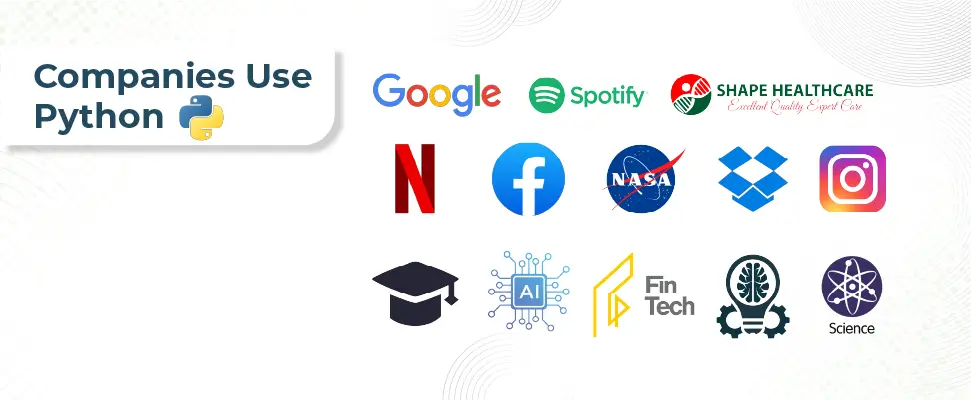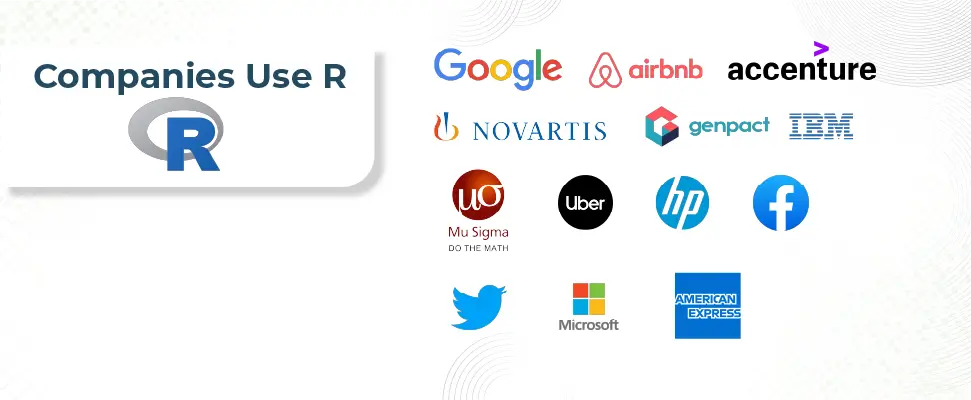Table of Contents
ToggleIntroduction
What is Python?

Pros & Cons of Python
| Pros | Cons |
|---|---|
| Easy to learn | Consumes a lot of memory |
| Vast collection of libraries | Runtime errors are hard to avoid |
| Quick development process | It takes a lot of patience to test the Python program. |
| Fewer lines of code | Limitations in mobile app development |
| Large and active community | Slower program execution speed |

Don't miss out on your chance to work with the best!
Apply for top job opportunities today!
Advantages of using Python in Machine Learning
- Python is platform independent that requires little or no change. Developers can create a standalone application using Python without any additional language.
- It provides simplicity and consistency with its concise and readable code, making it easy to master the language by both beginners and experienced developers with less effort.
- Other frameworks would require a lot of resources to complete a single project, but this is not the case in Python. Instead, Python as a language is programmed from start to finish.
- It offers a reliable framework and various libraries such as PyBrain a modular machine-learning library for easy-to-use algorithms. Additionally, its pre-written code reduces the development time significantly and speeds up the development process.
- Python’s offers ease of execution and its great active community allows it to gather input and feedback.
What Makes Python the Most Suitable Language for Machine Learning?
Python’s use case in Machine learning and AI provides us with the perfect solution to overcome fraud detection, personal assistants, spam filters, search engines, and recommendation systems. The rising demand for smart solutions today has necessitated the development of AI to automate tedious tasks. Python in this regard is considered the best algorithm and its active community adds the extra benefit to developers to discuss any issues and errors.
What is R programming?

R is a statistical, interpreted, and domain-specific programming language primarily used for data analysis and visualization.
Pros & Cons of R programming
| Pros | Cons |
|---|---|
| Consists of more than 10000 packages | Lacks security |
| Its robust features and graphical techniques make it suitable for statistics | Slower execution |
| Open-source | Steeper learning curve |
| Provides a wide range of host packages for data wrangling | Consumes a lot of memory |
| Platform-independence | Lacks detailed documentation |
| Supports regression and classification options and offers neural network packages for ML development | Requires prior experience in other programming languages such as Python, SQL, and SAS |
Advantages of R language in Machine Learning
It is the best statistical programming language available in the market which is widely used by research scientists and data analysts.
- R with its data wrangling feature helps to clean, restructure, and enrich the raw data and converts it into usable format.
- Its extensive support for statistical modeling is beneficial for central tendency, a measure of variability, probability, hypothesis testing, ANOVA, and regression analysis.
- Its ETL functionalities provide an interface for data science database applications.
- R can handle all kinds of Machine Learning algorithms such as supervised learning, unsupervised learning, semi-supervised learning, and reinforcement learning.
- It offers data visualization packages in the data science project, which is essential for exploratory data analysis such as ggplot2, Lattice, highcharter, Leaflet, RColorBrewer, and plotly.
- It provides dplyr, purr, tidyxl, Hmisc, and sqldf for data analysis and data wrangling packages.
Companies Using Python

Companies that use R

Should I use R or Python for Machine Learning?
Both of the languages make an excellent option for Machine Learning. However, Python provides more benefits than R:
- Python provides libraries such as TensorFlow, scikit-learn, and Keras for machine learning, which helps to build models from scratch.
- It offers smooth integration with other languages.
- It provides better memory use than R.
How is Python Different from R Language?
- Firstly, Python is objected object-oriented programming language, while R is a procedural programming language.
- Secondly, Python lacks any package management system, whereas R offers many packages, which developers can install easily.
- Finally, R is a compiled language, meaning it needs to convert into machine instructions before execution. On the other hand, Python is an interpreted language, which means code executes directly without converting it into machine language.
Final Words
This article explores the differences and usage of R and Python for Machine learning and data science. Both of these are beneficial tools for data science and ML. If you already have some familiarity with other programming languages, you can start with Python 3 from beginner to advanced. But if you have zero experience, you can start with any online beginner’s course to get going. Similarly, there are free courses available for R as well.
Take control of your career and land your dream job!
Sign up and start applying to the best opportunities!

FAQs
R is not as beginner-friendly as Python, so learning R as a beginners can be challenging. That being said, it varies from individual learning experience, and some may find it easy to master the basic concept of R. Still, the learning curve is steeper as compared to the other languages. However, getting expertise in R can be rewarding since there are a few R experts in the industry. Because of this, R programmers and data scientists enjoy competitive salaries.
Not exactly, both languages have similarities in certain aspects but they differ from each other. For instance, Python mostly deals with classes, which is the same in C++ and Java with many built-in functions. However, R uses arrays, vectors, and matrices and uses fewer functions. It is important to note that Python is object-oriented offering easier solution to create and manipulate the function.
Yes, R is good for machine learning. But if you opt R for machine learning, you need to have a solid grasp of programming knowledge and logic. Also, it’s quite hard to find candidates good in statistics and programming to build applicable models.

